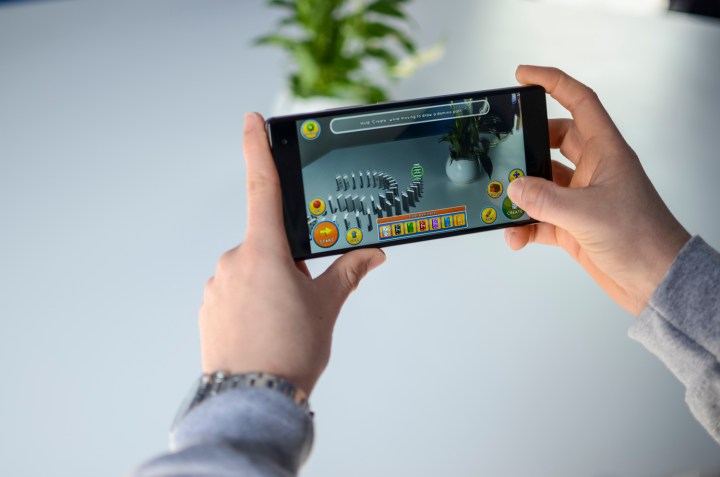
https://twitter.com/projecttango/status/941730801791549440
The move comes mere months after Google increased support for ARCore, its AR development platform that’s allowed for cool AR stickers on the Pixel 2 camera, among other fun apps for Android phones. It’s still in its infancy, but Google clearly sees ARCore as a more viable platform than Tango.
Speculation is rife that Google’s hand was forced by the emergence of Apple’s ARKit, which brought augmented reality to iOS11 apps. Despite launching way back in 2014, Tango never really got off the ground, thanks to restrictions that forced developers into very high-end equipment. Perhaps because of those restraints, Tango AR has only ever really been seen on two devices: the Lenovo Phab 2 Pro and the more recent Asus ZenFone AR.
What made Project Tango so special? Much like Microsoft’s HoloLens, Tango used a smartphone’s camera to map out a 3D approximation of an area to create a game world based around your real confines. Conventional AR, such as that seen in Pokemon Go, simply transposes images over the phone camera.
Tango was always an ambitious project, with big plans for the medical world or as an interactive tour guide in museums. Recently, HoloLens and Tango were used to create a life-like tank experience for guests of the World of Tanks TankFest 2017 event.
Unfortunately for those few who did adopt Tango, it seems the extreme high-end nature of the platform was its stumbling block. Hopefully Google will look to import much of what made Tango great into ARCore.
“Our goal with Tango was really to prove out the core technology and show the world that it’s possible,” Google AR/VR boss Clay Bavor told TechCrunch. “Obviously others have started to invest in smartphone AR; our goal with Tango has always been to drive that capability into as many devices as possible.”
While it’s an unfortunate move for anyone who bought the Asus ZenFone AR, hopefully Tango’s retirement will mean extra movement on ARCore development — and an increase in AR content as a whole. But support ending doesn’t mean you need to stop having fun with your Tango-enabled device, should you have one. Have fun with some of the our favorite Tango AR apps.


